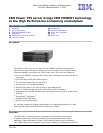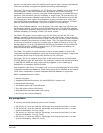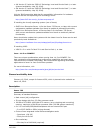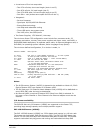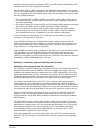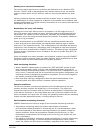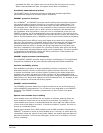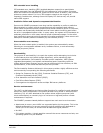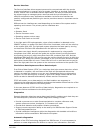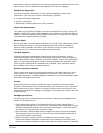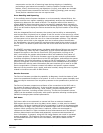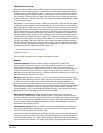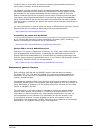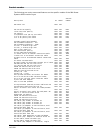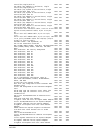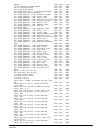
IBM United States Hardware Announcement
110-008
IBM is a registered trademark of International Business Machines Corporation
6
Memory error correction extensions
The memory has single-bit-error correction and double-bit-error detection ECC
circuitry. The ECC code is also designed such that the failure of any one specific
memory module within an ECC word by itself can be corrected absent any other
fault.
Memory protection features include scrubbing to detect errors, a means to call for
the deallocation of memory pages for a pattern of correctable errors detected, and
signaling deallocation of a logical memory block when an error occurs that cannot be
corrected by the ECC code.
Redundancy for array self-healing
Although the most likely failure event in a processor is a soft single-bit error in
one of its caches, other events can occur, and they need to be distinguished from
one another. For caches and their directories, hardware and firmware keep track
of whether errors are being corrected beyond a threshold. If exceeded, a deferred
repair error log is created.
Caches and directories on the POWER7 chip are manufactured with spare bits
in their arrays that can be accessed via programmable steering logic to replace
faulty bits in the respective arrays. This is analogous to the redundant bit steering
employed in main storage as a mechanism that is designed to help avoid physical
repair, and is also implemented in POWER7 systems. The steering logic is activated
during processor initialization and is initiated by the built-in system-test (BIST) at
power-on time.
When correctable error cache exceeds a set threshold, systems using the POWER7
processor invoke a dynamic cache line delete function, which enables them to stop
using bad cache and eliminates exposure to greater problems.
Fault monitoring functions
• When a POWER7-based system is powered on, BIST and POST (power-on self-
test) check processor, cache, memory, and associated hardware required for
proper booting of the operating system. If a noncritical error is detected or if the
errors occur in resources that can be removed from the system configuration, the
restarting process is designed to proceed to completion. The errors are logged in
the system nonvolatile RAM (NVRAM).
• Disk drive fault tracking is designed to alert the system administrator of an
impending disk drive failure before it impacts customer operation.
Mutual surveillance
The Service Processor monitors the operation of the firmware during the boot
process, and also monitors the Hypervisor
TM
for termination. The Hypervisor
monitors the Service Processor and will perform a reset/reload if it detects the loss
of the Service Processor. If the reset/reload does not correct the problem with the
Service Processor, the Hypervisor will notify the operating system and the operating
system can take appropriate action, including calling for service.
Environmental monitoring functions
POWER7-based servers include a range of environmental monitoring functions:
• Temperature monitoring warns the system administrator of potential
environmental-related problems by monitoring the air inlet temperature. When
the inlet temperature rises above a warning threshold, the system initiates an
orderly shutdown. When the temperature exceeds the critical level, or if the
temperature remains above the warning level for too long, the system will shut
down immediately.
• Fan speed is controlled by monitoring actual temperatures on critical components
and adjusting accordingly. If internal component temperatures reach critical
levels, the system will shut down immediately, regardless of fan speed. When a



